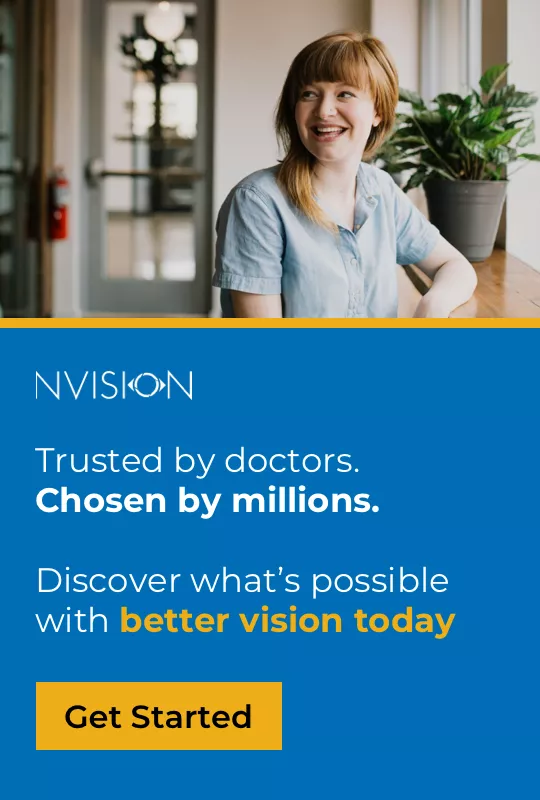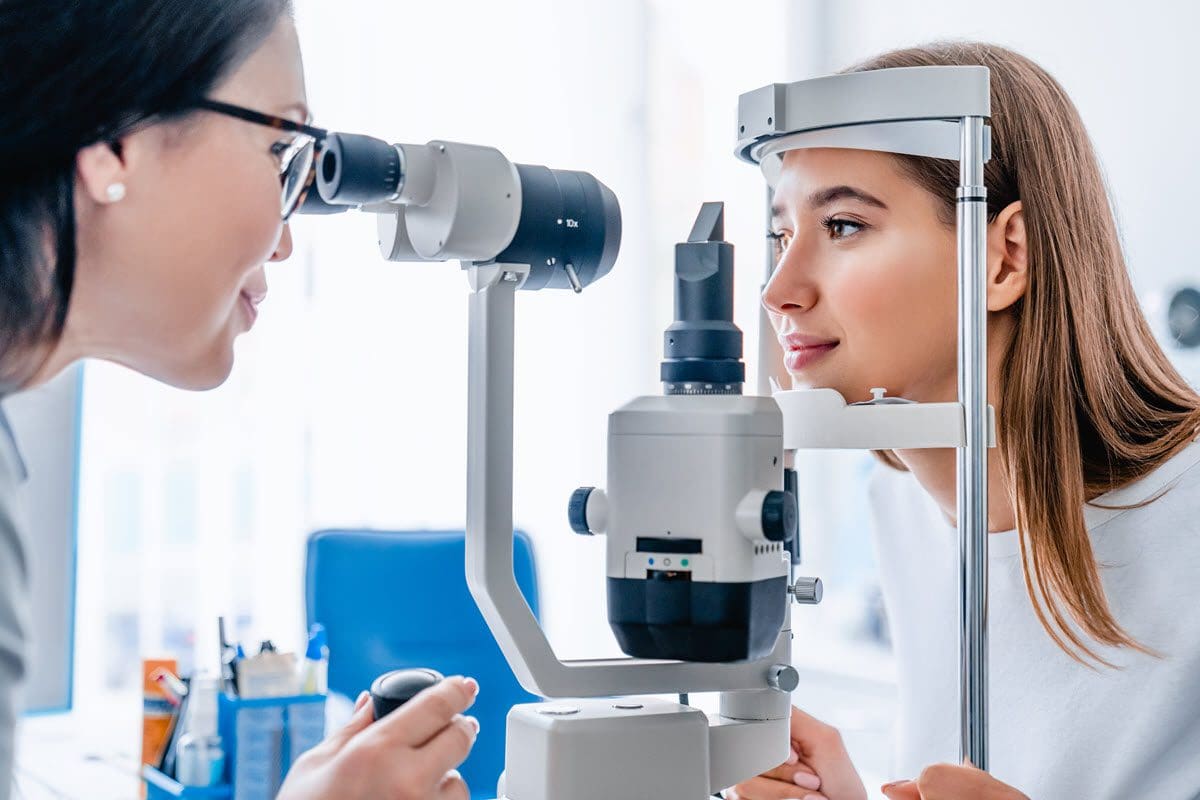LASIK Alternatives: Comparing Vision Correction Options
Last Updated:

Article At a Glance
LASIK is one of the most well-known surgical procedures used to correct a range of vision problems, such as nearsightedness, farsightedness, and astigmatism. But LASIK is not right for everyone.
LASIK alternatives include EVO ICL, PRK, RLE, LASEK, Epi-LASIK, Contoura LASIK, and SMILE. The type of procedure you choose will depend on various factors that are unique to your vision correction needs.
Table of Contents
Top Alternatives to LASIK
Not everyone is a great candidate for LASIK. Some patients are told their eyes don’t qualify. Others feel LASIK is “old news” and want the latest, most advanced vision correction procedures. Still others are nervous after reading negative LASIK stories online.
The good news: LASIK is just one of many safe, effective options. Modern eye surgery has advanced significantly, and there are multiple procedures that can deliver life-changing results—often tailored to your unique eyes.
You deserve clear vision. We can help.
With 135+ locations and over 2.5 million procedures performed, our board-certified eye surgeons deliver results you can trust.
Your journey to better vision starts here.

EVO ICL
EVO ICL involves placing a very thin lens within the eye to correct nearsightedness. The surgery takes about 20 minutes per eye, and incisions are made with a laser. Side effects are minimal, but recovery can take several months.
The EVO ICL is ideal for people with thin corneas or chronic dry eye. People like this may not be suitable for LASIK, but they can get the results they need with EVO ICL. EVO ICL is often described as “implantable contact lenses,” giving you the crisp vision of LASIK without permanently reshaping the cornea.
PRK
Photorefractive keratectomy (PRK) is a form of laser surgery in which doctors reshape the cornea and improve common vision problems. To access deeper tissues, doctors remove outer cornea layers with a laser or brush. People who don’t qualify for LASIK due to thin corneas may benefit from PRK instead.
Recovery from PRK can be long and painful. But since the surgery doesn’t require a flap (as LASIK does), it could be a better choice for athletic people or pilots. PRK is also one of the longest-studied procedures in vision correction, giving patients confidence in its track record of safety and effectiveness.
RLE
Refractive lens exchange (RLE) is a surgical procedure in which doctors replace the lens inside your eye with a synthetic version. The lens implanted is specifically designed to correct your individual vision problem. If your vision changes after surgery, your doctor can replace the lens.
RLE can be a good option for people with prescriptions that are too strong for LASIK correction. RLE is essentially the same procedure used to treat cataracts, just performed earlier for vision correction—making it a good fit for patients who want a “one-and-done” solution that eliminates the future risk of cataracts.
LASEK
LASEK eye surgery is a procedure that permanently reforms the shape and thickness of the cornea. Conditions like nearsightedness, farsightedness, and astigmatism can all be treated with LASEK. To access deep cornea tissues, doctors remove outer layers with alcohol, push the cells aside, and replace them after surgery.
LASEK is a good option for people with thin corneas who don’t qualify for LASIK. Recovery time is slightly prolonged, as the tissues need time to heal. While less common today than PRK or SMILE, LASEK remains a trusted alternative for patients who want a balance between safety and long-term outcomes.
Epi-LASIK
Epi-LASIK uses lasers to permanently change the shape and thickness of the cornea. Surgeons use this procedure for nearsightedness, farsightedness, and astigmatism. Doctors access deeper tissues by using a specialized tool to shear away outer cornea layers. They are replaced when the surgery is complete.
Epi-LASIK can reduce post-surgical pain, due to the way deeper tissues are accessed. It can be a good solution for people who don’t qualify for LASIK due to large pupils or dry eyes. Epi-LASIK is sometimes viewed as a “middle ground” between LASIK and PRK—less painful than PRK, but without the corneal flap of LASIK.
Wavefront-Guided LASIK
Wavefront LASIK is a revolution in vision correction. Doctors measure how light moves through your eye and use that data to guide tissue removal during LASIK. Precise cuts can mean even better results than those seen in standard LASIK.
If you’re a candidate for LASIK, you qualify for the wavefront-guided version. The surgery, risks, recovery time, and more are all the same. For patients who are comfortable with LASIK but want the “latest and greatest,” wavefront-guided LASIK provides a more customized procedure that can reduce issues like night glare or halos.
Phakic IOLs
Phakic intraocular lenses (or phakic IOLs) are synthetic lenses permanently implanted within your eyes to correct nearsightedness. If you’re not a good candidate for LASIK due to thin corneas, too-high prescriptions, or other factors, this surgery could be a good choice.
Phakic IOLs are expensive, and the healing time can be extensive. But they are a good solution for people who want permanent vision correction and can’t get LASIK. Unlike RLE, your natural lens is left in place, which preserves your eye’s ability to focus at different distances.
SMILE
Small incision lenticule extraction (SMILE eye surgery) is a new version of LASIK that works explicitly on myopia and astigmatism. The two surgeries cost about the same, have similar healing times, and have similar side effects.
In SMILE, doctors cut a disc-shaped piece of cornea in the eye to reshape your eye permanently. Patients often choose SMILE if they want a minimally invasive option that avoids the LASIK flap, but still want fast healing and visual results on par with LASIK.
Comparing LASIK Alternatives: Which Option Is Right for You?
| Treats | Ideal Candidate | Recovery | Duration | |
| EVO ICL | Nearsightedness | Thin corneas or chronic dry eye | 7 days for clear vision, 3 months for full healing | 20 minutes per eye |
| PRK | Nearsightedness, farsightedness, astigmatism | Thin or steep corneas | At least a week for clear vision; 6 months for full healing | 10 minutes per eye |
| RLE | Nearsightedness, farsightedness, astigmatism, presbyopia | Prescriptions too high for LASIK | Several weeks | 15 minutes per eye |
| LASEK | Nearsightedness, farsightedness, astigmatism | Thin corneas | A week or more for clear vision, several months for full healing | 10 minutes per eye |
| Epi-LASIK | Nearsightedness, farsightedness, astigmatism | Thin corneas, large pupils, moderate myopia | A week or more for clear vision, several months for full healing | 10 minutes per eye |
| Wavefront-Guided LASIK | Nearsightedness, farsightedness, astigmatism | Prescriptions too high for LASIK | Up to 12 hours for clear vision; 6 months for full healing | 15 minutes per eye |
| Phakic IOLs | Nearsightedness | People who are not good LASIK candidates | Up to 48 hours for clear vision; several months for full healing | 15 minutes per eye |
| SMILE | Nearsightedness and astigmatism | People who are not good LASIK candidates | 24–48 hours, with longer times for full healing | 10 to 15 minutes per eye |
You deserve clear vision. We can help.
With 135+ locations and over 2.5 million procedures performed, our board-certified eye surgeons deliver results you can trust.
Your journey to better vision starts here.
Choosing the Right LASIK Alternative
Which LASIK alternative is right for you? Or should you have standard LASIK instead? These aren’t questions you can answer alone. It’s essential to reach out to a medical professional, such as NVISION Eye Centers, to determine the best vision correction procedure for you.
During a LASIK consultation, doctors will test your eyes and determine which surgical procedure is right for you. At the end of that appointment, you’ll understand the risks and benefits of each option clearly. With that information, you can make an informed decision about your future.
Remember: If you’ve been told you can’t have LASIK, that doesn’t mean you’re out of options. In fact, some alternatives may be a better match for your lifestyle, your prescription, and your long-term eye health.
LASIK Alternatives Frequently Asked Questions
It depends. Each option is designed to address a different problem or treat a specific type of eye. Your doctor can help you decide which is right for you.
Several LASIK alternatives can address astigmatism, including PRK, RLE, LASEK, epi-LASIK, wavefront-guided LASIK, and SMILE. Modern mapping technologies like wavefront can make results especially precise for patients with irregular corneas.
The top alternatives to LASIK for myopia are phakic IOL or EVO ICL. An artificial lens replaces the one you were born with, permanently correcting your nearsightedness. MILE is also gaining popularity for patients with mild-to-moderate myopia.
Several LASIK alternatives can address astigmatism, including PRK, RLE, LASEK, epi-LASIK, wavefront-guided LASIK, and SMILE. However, RLE is often the most effective choice for strong farsighted prescriptions.
You deserve clear vision. We can help.
With 135+ locations and over 2.5 million procedures performed, our board-certified eye surgeons deliver results you can trust.
Your journey to better vision starts here.
References
- The Current State of SMILE vs. LASIK. (April 2021). Review of Ophthalmology.
- Comparison of Clinical Outcomes of LASIK, Trans-PRK, and SMILE for Correction of Myopia. (February 2022). Journal of the Chinese Medical Association.
- Refractive Eye Surgery: Helping Patients Make Informed Decisions About LASIK. (May 2017). American Family Physician.
- Alternative Refractive Surgery Procedures. (April 2023). American Academy of Ophthalmology
- Long Term Results of Epi-LASIK and LASEK for Myopia. (June 2014). Contact Lens & Anterior Eye.
- Long-Term Outcome of Epi-LASIK for High Myopia. (August 2011). European Journal of Ophthalmology.
- Phakic Intraocular Lens Myopia. (February 2023). StatPearls.
This content is for informational purposes only. It may have been reviewed by a licensed physician, but is not intended to serve as a substitute for professional medical advice. Always consult your healthcare provider with any health concerns. For more, read our Privacy Policy and Editorial Policy.

